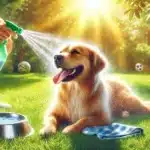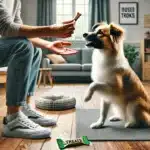Dog dental care is one of the most overlooked aspects of pet health — yet it’s just as important as grooming, feeding, or exercise. Poor dental hygiene in dogs can lead to bad breath, gum disease, tooth loss, and even serious internal health issues.
The good news? You don’t need to be a vet to take care of your dog’s teeth. Brushing your dog’s teeth at home is simple, inexpensive, and can make a world of difference.
Why Dental Hygiene Is So Important
Neglecting your dog’s teeth can result in more than just stinky breath. Here’s what poor oral care can lead to:
- Plaque and tartar buildup
- Gingivitis and periodontal disease
- Tooth loss
- Pain while eating or chewing
- Bacterial infections that spread to the heart, liver, or kidneys
According to vets, 80% of dogs show signs of dental disease by age 3. Brushing is the best first line of defense.
How Often Should You Brush?
Ideally: Daily brushing is best.
Realistically: 3–4 times per week can still make a big difference.
Like any habit, consistency matters more than perfection.
What You’ll Need
Before you begin, make sure you have:
- Dog-specific toothpaste: Never use human toothpaste — it contains fluoride and xylitol, which are toxic to dogs
- Dog toothbrush: Options include angled brushes, finger brushes, or dual-head brushes for different sizes
- Towel or non-slip mat
- Treats or a toy (for positive reinforcement)
- Good lighting and a quiet space
Optional: gauze, dental wipes, or dental gels for supplemental care.
Step-by-Step: How to Brush Your Dog’s Teeth
1. Choose the Right Time and Place
Pick a calm moment — after a walk or play session when your dog is more relaxed. Sit on the floor or place your dog on a non-slip surface. Avoid distractions and keep your tone gentle.
2. Introduce the Toothpaste and Brush
Let your dog sniff and lick the toothpaste first — most are chicken or peanut butter flavored. Show them the toothbrush and touch it to their mouth without brushing yet. Reward with praise or a treat.
3. Lift the Lips and Start Brushing
Hold your dog’s muzzle gently. Lift their lips and angle the brush at 45 degrees toward the gumline. Use small, circular motions, focusing on the outer surfaces (where most plaque builds up).
If your dog resists, start with just a few teeth per session and build up over time.
4. Focus on the Back Molars
The back teeth — especially the upper molars — are where tartar accumulates fastest. Spend a bit more time here if your dog allows.
5. Don’t Worry About the Inner Surfaces
Dogs’ tongues naturally help clean the inner parts of their teeth. If your dog is cooperative, great — but if not, don’t stress about it.
6. Keep It Short and Positive
A full brushing might take 30 to 60 seconds. If your dog becomes agitated, stop early and try again tomorrow. Always end on a positive note with praise and a treat.
Tips for Making Brushing Easier
- Start young: Puppies adapt quicker to dental routines
- Use flavored toothpaste your dog enjoys
- Be consistent: Same time, same place builds familiarity
- Pair with another routine like grooming or after dinner
- Try dental wipes or water additives on extra-busy days
- Never force it — keep it calm and cooperative
Signs of Dental Issues in Dogs
Watch for symptoms that may indicate oral health problems:
- Bad breath (beyond typical “dog breath”)
- Red, swollen, or bleeding gums
- Yellow or brown tartar buildup
- Difficulty eating or chewing
- Pawing at the mouth
- Loose or missing teeth
If you notice any of these, consult your vet for a professional dental exam.
Alternatives and Supplements to Brushing
While brushing is the gold standard, these additional tools help:
- Dental chews: Look for VOHC-approved products
- Water additives: Added to drinking water to reduce plaque
- Dental toys: Designed to scrub teeth while chewing
- Raw bones (with supervision): Natural way to clean teeth
- Professional cleanings: Recommended annually or as needed
These are helpful, but not a replacement for brushing.
Final Thoughts: Brushing Is Love
Brushing your dog’s teeth isn’t just about oral hygiene — it’s a proactive act of love and care. A few minutes a week can help prevent years of pain, costly treatments, and chronic illness.
The earlier you start, the easier it gets. Even older dogs can learn to tolerate and enjoy the routine. Be patient, be kind, and remember: every brush keeps that tail wagging a little longer.







